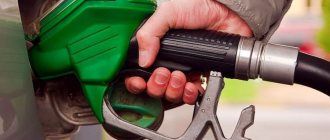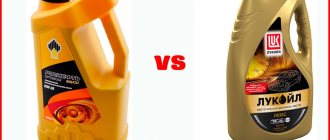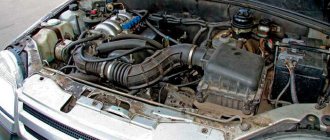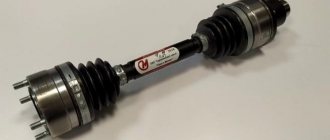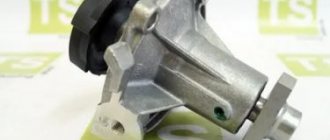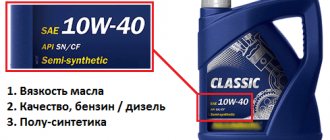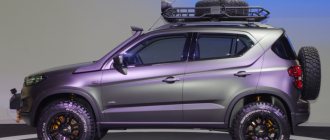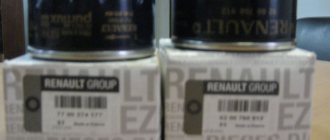- February 7, 2019
- Cars
- Victoria Slaviy
Many car owners often ask the question: which gasoline 92 or 95 is more suitable for the Chevrolet Niva? Looking ahead, we note that this question does not have a definite answer, so each time we need to take into account many factors, different components, and based on them, make one decision or another. There are situations and scenarios when the use of 92 gasoline is justified, and there are those when it is better to buy 95. The materials in this article will help you understand all the nuances.
What kind of gasoline did the Chevrolet Niva originally run on?
The car was originally designed for 92. Why? Because, according to statistics, it is more common, which is logical. After all, its production is cheaper and easier than 95. That is why 92 gasoline is written on the gas tank flap. This does not mean that you cannot fill with 95, but shows that the car can be refueled at a larger number of gas stations, including in the outback, where there may not be 95 gasoline at all. So, the designers designed the car to run on a more popular type of fuel to increase the likelihood of finding the right one. Therefore, there are no strict recommendations on what kind of gasoline - 95 or 92 - the Chevrolet Niva can be filled with. The choice is yours.
A trip to the mother-in-law - how much gas does Shevik consume?
Aloha to all fans of the Chevrolet Niva. Yesterday we came on a short cruise - we drove 300 kilometers one way to my mother-in-law. Here I would like to describe my feelings from the trip.
First, we filled up with 92 gasoline for 700 rubles (the price tag here is 31 rubles in Kirov). Drive to Rudnichny 290 km one way. The first 90 kilometers the road is good, but the trucks constantly go non-stop, plus there are permanent settlements where the gays really like to stand. I don’t have a radar detector yet, so I had to cut the first hundred at 70-80 km/h. I drove mostly in 4th gear, approximately 2900 rpm.
In this situation, the Shevik consumes quite a lot of gasoline; right before our eyes, the fuel availability arrow fell down. However, as soon as I left Belaya Kholunitsa, where the road was empty, I immediately drowned the kid there, since my tires were not studded, and there the road was powdery (late February), I didn’t drive too hard, I was driving at a cruising speed of 90 km/h in 5th gear. The number of revolutions became 2400 and here it is - the perfect balance of speed and efficiency. So if it seems to you that the Chevrolet Niva consumes a lot of gasoline, perhaps you should drive either slower or faster? Personally, 90 km/h is enough for me, the ride is very comfortable, and it really saves gas. I think 8 liters per hundred square meters maximum.
Having reached Kirs (240 km from Kirov), it was decided to top up the little guy with gasoline, because there was still a lot left. And oppa - there is no 92 gasoline. I had to add 6 liters of 95 to get 45 km. And then I felt the difference - the car drove, even uphill in fourth gear - it pulled without problems. Even in a straight line at a speed of 60 km/h it was possible to drive in fourth - the engine really pulled. Shevik 2004, according to the passport I don’t know which one they recommend. I always drove the 92, but I felt the difference between it and the 95 immediately, the dynamics appeared, it was very pleasant to drive up hills, the engine pulled. So if the instructions recommend pouring 95, pour it, the only thing is that it may be of low quality. I used Lukoil, everyone praises it.
For 45 kilometers I just flew like on wings, in 5th gear the speed was 90 km/h, I didn’t even shift on hills)) However, as people say, it’s hard to start at 95 in the cold, when we arrived (north after all), it was frosty minus 28. However, the next day they promised warming, we got ready to go back for lunch - the temperature was already -15, and the sun was already warming up at the end of February. So even on 95 gasoline they started. We drove to a local gas station and filled up with 800 rubles worth of 92nd.
In total, for 600 km we spent 1,700 rubles on fuel (plus 700 rubles for lunch in cafes - for two)), when last year we drove a six, we spent only 1,200 rubles. So yes - the Chevy Niva eats more, especially in the city - it turns out to be 13-14 liters. On the highway at optimal speed in optimal gear - 8-9 liters.
Read my blog, subscribe, spring and summer are coming - there will be a lot of travel, which means there will be photo reports on fishing and searching with a metal detector. It will be interesting))
We will be grateful if you share with your friends: Even more offroad:
This question is currently worrying many Niva Chevrolet car owners. This applies to both experienced drivers and newcomers who have only recently purchased a vehicle.
The path to convert 80 and 92 gasoline into 95
Tetraethyl lead as a means of increasing octane number was discovered in 1921. In order not to frighten people with the word lead, it was replaced by the more euphonious ethyl. The manufacturing company was well aware of the toxicity of thermal power plants, since in 1934, in the poorly ventilated premises of the company, five workers died and dozens went crazy.
In our country, leaded gasoline was banned on November 15, 2002 by Federal Law No. 209067-3 “On limiting the circulation of leaded gasoline in the Russian Federation.” At first glance, it may seem that now 95 gasoline can be safely filled without fear of poisoning, but in reality everything is much more complicated.
Formally, leaded gasoline, which disables the electrics of the Chevrolet Niva, is prohibited, everyone knows about this, however, few people know that, according to independent researchers, the intensity of pollution with lead compounds near highways is only increasing. This means that it must be stated that leaded gasoline can still be found in the column labeled 95. That is, the possibility of poisoning still exists. Therefore, we can give the most reasonable answer to the question: “Which gasoline, 92 or 95, is more suitable for the Chevrolet Niva.” Any, but without lead!
Manufacturer's requirements
Requirements allow the use of both 92 and 95 gasoline
Before deciding for yourself what kind of gasoline to pour into the tank of your car, you should read the instructions for its operation. Similar information may also be written on the inside of the fuel tank cap. It is recommended to use only the gasoline specified by the manufacturer. For Niva Chevrolet this is the 92nd.
Is it possible the 95th?
AI-95 can also be poured into the tank. There will be no harm to the car from this. As a result, the dynamics of transport will only increase, fuel consumption will decrease, and engine performance will improve. In terms of money, it will cost about the same, despite the fact that AI-95 is more expensive. Its consumption will be less.
It should also be remembered that 92 is common today in the Russian Federation, and therefore there is a possibility that it is diluted during production. Here everything will depend on this or that gasoline supplier to the market.
- A-92 [16.90%]
- A-95 [57.75%]
- A-95 premium [12.68%]
- I mix 92 and 95 [8.45%]
- GAS [4.23%]
Below we bring to your attention an article from the magazine.
Magazine "Behind the Wheel" 2005 No. 1 Author: Maxim Sachkov
The idea matured at a gas station, where the owners of two identical “ten” cars almost simultaneously drove up to different pumps: one said “92”, the other, respectively, “95”. What does the driver get and what does he lose by choosing one of these types of gasoline?
In the smoking room, the opinions of colleagues were divided - some argued that there was no difference in the behavior of the machine, others insisted on the opposite. My interest was fueled by an acquaintance of mine, the owner of a new foreign car, who often fills it with “ninety-five” (although the operating manual contains fuel with a lower octane number). Like, AI-95 is cleaner, and the car drives better. It became clear that the dispute would be decided only by measurements at the test site.
About choosing a permanent refueling
How to choose a permanent refill? Chat with the owners, read forums or motorist groups in contact. Statistics collected among Chevrolet Niva owners showed that the vast majority of owners make an average trip of one hundred kilometers. This means that it is possible to refuel strictly at one gas station. Therefore, those who drive a little are strongly recommended to choose a gas station that you trust and try, first fill up with 92, drive, observe, then 95. Compare fuel consumption, dynamics. And then, having chosen one brand or another, strictly refuel the car strictly at one gas station.
Which gasoline, 92 or 95, is more profitable for the Chevrolet Niva?
If for simplicity we assume that both are of the same quality, then, according to numerous reviews from the forums, the financial costs are the same.
Gasoline 95 is a little more expensive, but this is compensated by:
- Significantly lower fuel consumption, also because in some situations it allows driving in a higher gear under the same conditions.
- The dynamics of the car improves, the smoothness of maneuvers increases, and the driver is more comfortable driving the car.
- Since fuel consumption is 95% less, the car will need to be refueled less often (at least by 5 percent, but still). And this is tantamount to increasing the fuel tank, which is extremely important for traveling long distances.
It’s up to you to choose what kind of gasoline to pour into your Chevrolet Niva! Therefore, you can navigate according to your budget.
Is it necessary to fill in AI-95?
What kind of gasoline do you put in the injection Niva?
Reg.: 12/06/2004 Threads / Messages: 4024 / 23192 From: Moscow Age: 67 Car: 21214M, 2013
Alexey aka ALER.
Reg.: 12/06/2004 Threads / Messages: 627 / 51712
Reg.: 05.23.2005 Threads / Messages: 3 / 276 From: Moscow, Altufyevo metro station Age: 34 Car: KIA Sorento
Reg.: 12/06/2004 Threads / Messages: 627 / 51712
Reg.: 04/24/2006 Threads / Messages: 6 / 1957 From: St. Petersburg Age: 29 Car: NIVA 2003, TOYOTA CARINA II
Reg.: 05.28.2006 Threads / Messages: 2 / 332 From: Irkutsk Age: 39 Car: TERRANO II 1997, TD27ETI, 5cm bodysuit, KUMHO KL71 MT 32×11.5 R15, swan KINGONE 10000, front power steering.
Reg.: 12/06/2004 Threads / Messages: 627 / 51712
Reg.: 07/02/2006 Messages: 126 From: Togliatti Age: 45 Car: Niva urban 2018
Lately I've been using 95 Benz instead of 92, which I used to fuel my last car. Because on the 95th brother gives a card, it turns out to be 16 rubles. per liter from a Lukoil gas station, and if I pour 92 now, then at Bashneft it’s 19 rubles. per liter In short, in my situation it’s cheaper to just use 95, so I use it. I don’t feel any difference in dynamics (though it’s hard to say which is better to start in cold weather; the car spends the night in a warm garage). There is no difference in consumption either. Although I tried pouring 92 from cheap gas stations several times, it immediately consumed more. And so, if you fill up at a good gas station, the difference in consumption and everything else is negligible, IMHO. Yes, the instructions for my Niva say 95. And the 95 was registered in the Chevy. And by the way, the car with this new controller, M7.9.7, is more economical, I get 10 in normal conditions in the city, on the highway the same or a little more (because I press 110 - 120). Shniva ate about seven hundred grams—per liter more—in exactly the same conditions. The Shniva was from 04, and I don’t think that in the urban cycle the difference in consumption will be affected by the difference in weight between the Niva and the Shniva. Indeed, with the new controller it is a little more economical than the Nivka (and shnivka). Although the shniva was more economical on the highway, it’s a matter of aerodynamics.
How to determine the quality of gasoline by smell?
There is a simple but reliable way to determine whether gasoline contains harmful additives. To do this you need to smell gasoline. If after three minutes a clearly noticeable odor remains, this indicates that the gasoline contains additives to increase the octane number. Such gasoline can only be poured into a carburetor car. On the other hand, if the smell disappears too quickly, this is also not in favor of quality, the car will pull worse. The norm is about three minutes of distinct odor. Therefore, when choosing what kind of gasoline to fill your Chevrolet Niva with, take something that holds the smell for three minutes. Or follow the advice of experienced owners from among your friends.
Features and advantages of various brands of fuel
Standard 95 gasoline is good, no doubt about it. It is cleaner, of better quality, has a low degree of detonation and creates a feeling of comfort on the road. It is not surprising that, having looked at the manual and deciding what gasoline to fill in the Niva, many owners of cars of this brand without hesitation choose fuel with an octane rating of 95.
It would seem that everything is logical and understandable, the car reacts remarkably well to fuel, it is easy to drive, accelerates quite quickly and has excellent maneuverability. But after about 3-4 thousand kilometers you will have to change the spark plugs - they will simply burn out. Replacements will require a valve, and then engine overhaul is just around the corner. What is the reason?
Expert opinions regarding fuel are controversial. Some argue that 95 grade gasoline at gas stations is far from ideal, and in order to achieve the desired octane number, it is “clogged” with all sorts of additives. Additives leave carbon deposits on the spark plugs and have a very detrimental effect on the condition of the engine. So, when using 95 fuel, the Niva will soon fail. The only consolation is that if you took the car from the dealership, you can count on warranty repairs.
Grade 92 fuel has its own disadvantages and advantages. Lower octane increases the risk of detonation, and 8% impurities ensure that you will have to flush the engine with enviable regularity.
But don’t expect that the Chevrolet Niva, with its technical merits, will resemble a thoroughbred trotter. It will remain the same heavy truck, quite slow and clumsy, but quite reliable. To feel the difference, you can conduct an experiment by alternately using gasoline grades 92 and 95. Fuel with a higher octane number will definitely appeal to your car. But, as you know, the love of sweets causes tooth decay, and in the case of the Chevrolet Niva, its treatment can cost quite a lot of money.
How to assess the quality of gasoline by its drying mark
We take the glass and drip fuel onto it. In three to five minutes it should evaporate, look at the sediment, at the trace. Attention:
- if the stain is barely noticeable, then the gasoline is good;
- if the trace is blue with streaks and oil stains, then this hints at the presence of diesel fuel and fuel oil;
- if the trace is white, then it is acetone;
- white drops indicate water.
Important! If the car stalls after 500-2000 meters, then this is almost certainly a fuel problem. Therefore, when choosing which gasoline is best to fill in the Chevrolet Niva, it is also important to take into account that it should not leave streaks on the control glass.
Compromise solution: consequences may be unpredictable
Some owners of the Niva Chevrolet admit that they fill the tank with a mixture of two types of fuel. This decision is explained simply, since the gasoline mixture:
- increases octane number;
- reduce the risk of detonation;
- reduces the amount of soot that forms when fuel is burned in the engine;
- saves money – not only on fuel, but also on car repairs.
There is no universal proportion for mixing two types of fuel, and here it depends on your luck. Some car owners have been operating the Chevrolet Niva in this mode for years and are quite satisfied not only with its technical characteristics, but also with their financial expenses, the most significant of which is engine maintenance. Other car enthusiasts are less fortunate, since after just a few months of such an experiment, the Chevrolet Niva is sent for major repairs. Therefore, it is still not worth arguing that mixing fuel is the best option.
So what to fuel the Niva with?
Each car enthusiast must answer the question of what kind of gasoline to fill the Niva with on his own. But if you buy a car from a dealership, in the first few years of operation you should still follow the manual and fill the tank with fuel with an octane rating of 95. Perhaps this option will completely satisfy you, and then the question of which gasoline is better will disappear by itself.
If there are certain doubts, then you need to experiment, carefully monitoring the condition of the machine and relying not only on visible factors.
After changing the fuel, don’t be too lazy to go to a service station after about a week and get a diagnostic done. If everything is in order, then your choice was correct. If technical problems arise (an experienced technician will immediately tell you what they are connected with), then change the gasoline without regret. After all, your comfort and safety on the road are worth much more than money.
When is the best time to refuel?
On the forums of Chevrolet Niva owners, they say that the best time to refuel the car is before 9 a.m., before the fuel is drained from the fuel truck, because most gas stations have coarse filters, and after the fuel truck drains it, all the dirt from the day rises to the top. We remember that the working day of a fuel truck driver begins at eight in the morning. Experienced people already know at which gas stations, at what time they need to fill up in order to fill with the purest gasoline possible - you can also read about this on thematic forums.
Underfilling at gas stations
Another common problem with many gas stations is underfilling. We have never heard of overflow. But several programs and stories have even been filmed about underfilling. There are known cases when underfilling of fuel was done deliberately and was even regulated remotely from the office, and when a person arrived with a measuring canister, they turned on a small overflow, which greatly surprised motorists. But at most gas stations it is forbidden to pour fuel into cans, so that they don’t have a half-empty container poked in their noses. It is best here, as in the cases described above, to choose a gas station that either does not underfill or is less deceptive.
Some general tips
You shouldn’t think that some gasoline is better to fill in a Chevrolet Niva, and some is worse. The pungent smell of naphthalene or diesel fuel indicates that such fuel will only go into the carburetor as a last resort. The cloying, alcoholic aroma, on the contrary, says that it will only go into injection engines, it contains a high concentration of gas and it must be burned as quickly as possible, since it evaporates many times more. In extreme heat, the gases contained in gasoline can create gas locks and even lead to a fire. In the warm season, such fuel is extremely uneconomical and unprofitable, although it is safe for the engine. In addition, the gas contained in gasoline can sometimes cause jerking and interruptions. Therefore, avoid fuel that evaporates too easily. And don’t forget about other tips that will tell you exactly what kind of gasoline to fill in your Chevrolet Niva.
